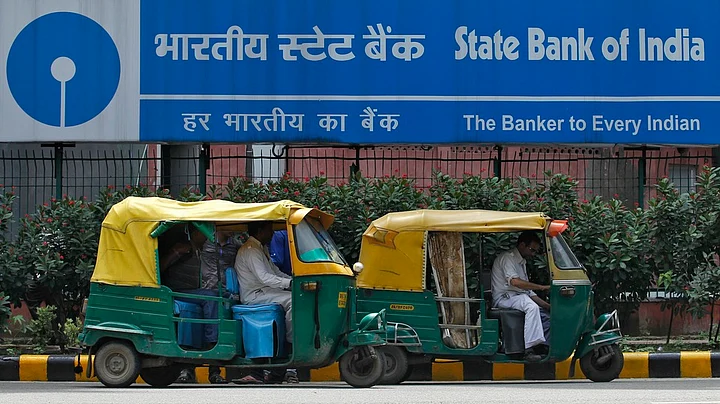Profit at State Bank of India, the country’s largest lender, more than doubled from a year ago as the bank reported strong growth in its core income. The bank also showed an improvement in asset quality indicators.
Profit after tax for the fourth quarter came in at Rs 2,814.8 crore, a 122 percent increase compared to Rs 1,263.8 crore reported last year.
Net interest income (NII), or the difference between interest earned on loans and that paid on deposits, rose 17 percent year-on-year to Rs 15,400 crore. Other income, however, declined marginally.
This is the last quarter where the bank will be reporting its standalone numbers as all five associate banks and Bharatiya Mahila Bank merged with SBI on 1 April.
Asset Quality Improves
For India’s largest lender, asset quality indicators showed some improvement after hitting a low in the December quarter.
As a ratio of total advances, gross non performing assets (NPAs) for the January-March period were at 6.90 percent, as compared with 7.23 percent in the October-December period. In absolute terms, gross bad loans rose 3.9 percent quarter on quarter.
Fresh slippages during the quarter stood at Rs 9,755 crore compared to Rs 10,185 crore in the December quarter. In its notes to accounts, the bank said that the regulatory requirement to disclose any divergence of assessment in bad loans between the bank and the regulator does not apply to it.
SBI’s net NPA ratio for the fourth quarter was at 3.71 percent, as compared with 4.24 percent in the third quarter. Provisions against NPA during the quarter rose nearly 52 percent quarter-on-quarter to Rs 10,993 crore.
During the fourth quarter, the bank saw recoveries of bad loans to the tune of Rs 1,203 crore, while Rs 1,002 crore in bad loans were upgraded to standard category.
The bank disclosed that it has invoked the Strategic Debt Restructuring (SDR) scheme and the Scheme For Sustainable Structuring of Stressed Assets (S4A) in loans amounting to Rs 5,169.51 crore.
Separately, it disclosed that Rs 1,608.94 crore was added to gross NPAs in the fourth quarter due to the regulator’s decision to allow small borrowers more time to repay their dues following demonetisation.
In an investor presentation, the bank said that its watchlist for stressed assets stands at Rs 32,427 crore post the merger with associate banks. This represents 1.6 percent of total advances.
Aalok Shah, research analyst at Centrum Broking told BloombergQuint that while asset quality concerns may abate in the next couple of quarters, resolution of stressed accounts will remain a challenge.
The biggest challenge for SBI can be the longer than expected time frame for resolution of accounts which have been in discussion. That is going to be a systemic issue and not specific to SBI. Beyond that the challenge for bank right now is the integration of subsidiaries.Aalok Shah, Research Analyst, Centrum Broking
Deposits Surge; Advances Inch Up
SBI saw its deposits surge by 18.1 percent compared to a year ago due to the increase following demonetisation. Since most of the deposits came into current and savings accounts, the bank’s CASA (current account savings account) ratio improved to 45.58 percent as on March 2017 compared to 43.84 percent in March 2016.
Despite withdrawal limits being lifted, a large proportion of deposits have stayed in the system, said the bank.
The lender received Rs 1.65 lakh crore in deposits during the demonetisation period. Of this, about 65 percent has stayed with the bank.
Growth in advances remained subdued during the quarter and the financial year. In 2016-17, SBI saw domestic advances increase by just under 8 percent, in line with growth across the industry. Much of the growth came from retail segments including home loans, auto loans and personal loans. Overall, retail loans grew by 21 percent over the financial year.
Sectors where the country’s largest lender reduced loan exposure included telecom, where advances declined 12 percent, and the roads and ports segment, where advances fell by over 15 percent.
Outstanding advances to the engineering sector also fell sharply by 25 percent compared to a year ago. Advances to large corporates increased by 3.6 percent in 2016-17, while outstanding loans to mid corporates remained flat.
(This article was originally published in BloombergQuint)
(At The Quint, we question everything. Play an active role in shaping our journalism by becoming a member today.)
